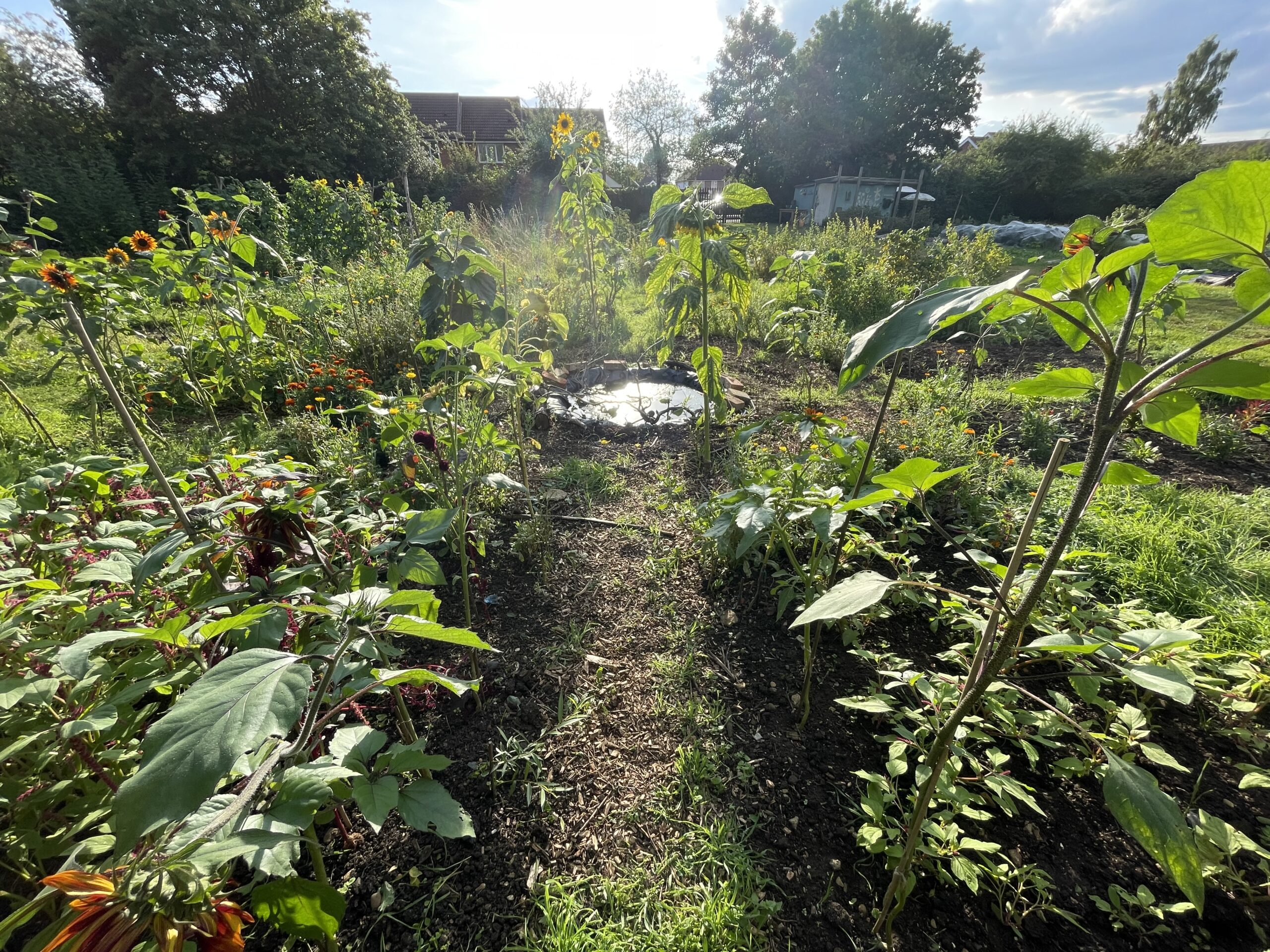Project
Lumigraph Tinctoria is a collaborative dye garden project by creative practitioners Patrick Mannion and Rosie McLean exploring themes of sustainability, praxis and connection through collaborative growing, photosensitivity and textiles.


Artists’ description of the project:
“A Lumigraph, or light field, is a four-dimensional representation of light rays passing through an empty volume of space. Tinctoria is a Latin suffix which refers to a plant’s use in dyeing.
Regarding ‘Lumigraph’ . We deploy this poetically to speak about dimensions beyond the visible, such as the “invisible fabric” (Joachim Koester) of relations with each other and our human and more than human collaborators who we connect with through the slow processes of growing, nurturing soil and seedlings in rhythm with the seasons, harvesting, processing and dyeing.
An allotment is not an ‘empty space’. Well before our growing intervention it was home to all manner of creatures, invertebrates, insects and plants who we have been getting acquainted with gradually throughout the year. We also inherited the memories of previous Fig projects which continue to echo through this current iteration. Nor Greenhalgh’s composting and archaeological trench from the Elder Vernacular project in 2021 became our pond. The chard grown the year before for photographic emulsions for local artist John Blythe self-seeded and resolutely sprang up to the point that we decided we had to keep a bed of it and try our own version of the anthotype process.
The plot in its current form was designed and drawn up by Patrick, who works as a therapeutic horticulturalist and community arts facilitator at TWIGS community garden. Rainbow coloured plant beds splay outwards from a circular pond in the plot’s centre. Its birds eye view has a formal resemblance to colours radiating from a lens, which was an emergent rather than conscious design decision. It does however very much connect with our ongoing conversations about shifting attention beyond optics towards cyclical rhythms, sustainability and multi sensory experience.
Walking through the allotment in August. An assault of colour, the sound of insects, the smell of warm damp earth (rainfall punctuated by hot spells) and the overpowering scent of calendula.
To conclude, we’d like to share this quote from philosopher Karen Barad’s work ‘Meeting the Universe Halfway’, which has been important to our project:
“… my aim is to disrupt the widespread reliance on an existing optical metaphor – namely reflection – that is set up to look for homologies and analogies between separate entities. By contrast, diffraction, as I argue, does not concern homologies but attends to specific material entanglements.”
More photos from the project can be found on Rosie’s website here.

